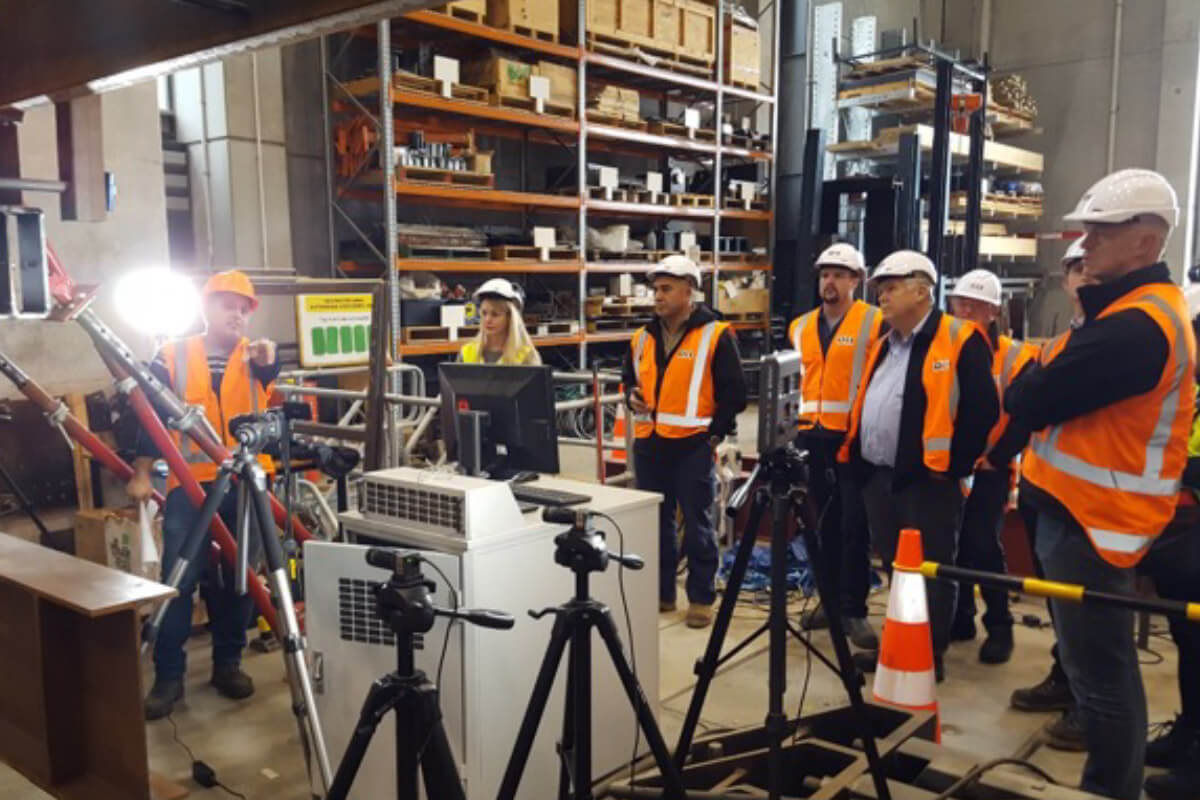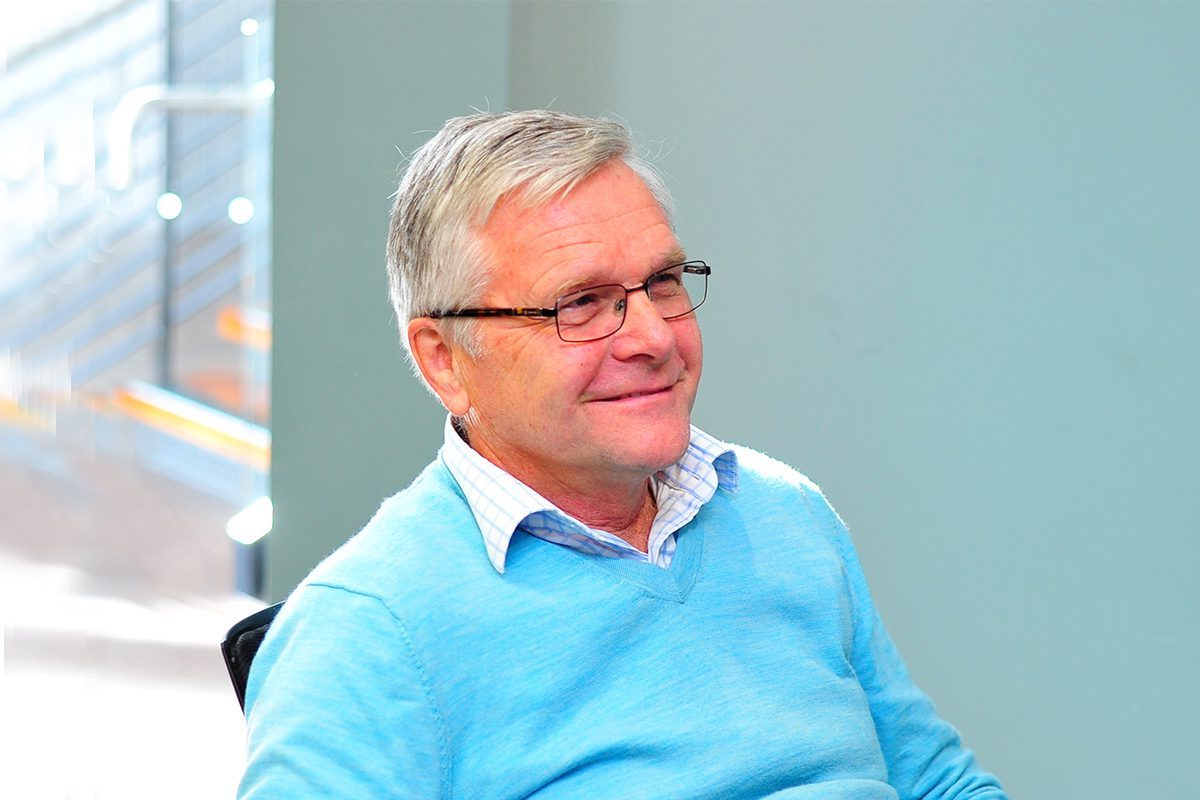HERA Foundation PhD scholarship recipient’s Hafez Taheri’s research topic is part of a long-term HERA research program managed by the New Zealand Welding Centre.
Its program leader, our General Manager of Fabrication 4.0, Dr Michail Karpenko, explains the underlying strategic objectives of this research and why the Foundation contribution is so valuable:
“New Zealand’s major natural challenge is the provision of earthquake safe construction. Steel with its inherent strength, ductility, weight and environmental credentials is the material of choice especially when it comes to high rise and long span construction such as in buildings and bridges.
As a result of those advantages the New Zealand steel-based industry makes a significant contribution to our infrastructure. It provides this contribution competitively as a result of a widely supported, research-based innovation efforts.
While the technical performance remains a key steel construction research focus both nationally and internationally, recent local efforts included increased emphasis on cost effective delivery of the technical solutions with the aim of increasing competitiveness if compared to alternative solutions but also in competition with fabricated steel imports.
The HERA Foundation supported New Zealand seismic research since its inception through numerous grants. One of its most recent PhD scholarship recipients is Hafez Taheri, and his scholarship story underscores the benefits the HERA Foundation funding brings.
Hafez’s PhD topic is part of a wider research program with the objective to optimise the design of welded connections as used in New Zealand in order to make fabrication more cost effective while ensuring adequate performance also during severe earthquake loads.
The research is performed here in New Zealand at the University of Auckland under the supervision of leading seismic research gurus Ass. Prof. Dr Charles Clifton and Ass. Prof. Dr James Lim. But we are also proud to be internationally linked in this research with leading fracture mechanics experts Prof Pingsha Dong from the University of Michigan and Prof. Adolf Hobbacher from the University of Wilhelmshaven in Germany.
Hafez has just handed in his thesis for final assessment. Over the last four years he worked tireless on his project and this was only possible through the financial support of the HERA Foundation. No question without that funding we would not be able to attract the research talent required for such complex research tasks.
And for HERA this brought not only an outstanding research outcome, but we were also able to take Hafez over as a HERA researcher knowing exactly what talent we could secure for our ongoing project work. And so, one of Hafez’s current jobs is to update our HERA/SCNZ steel connection guides with the outcomes of his research.”
And here is what Hafez had to say to his part in the HERA Foundation supported research effort:
“Having completed my Bachelor degree in Iran and then getting an ME degree as structural engineer from the University Putra Malaysia with main focus on connections for precast concrete walls , I was keen to expand my professional career in a country with a sound structural engineering record but also with political stability.
Therefore, in 2016, I was over the moon to be accepted as a PhD candidate by the University of Auckland. And additionally, I was fortunate to have won the 3-year HERA Foundation scholarship allowing me to focus on my research and complete my PhD study hopefully with the awarding of the aimed-for degree.
The main aim of my research was to optimise welded joint details in order to make fabrication more cost-effective while ensuring adequate performance of the connection in-service and specifically under seismic loading. I also investigated the use of stainless steel as an architecturally attractive material for critical seismic connections.
The main challenge was a high level of complexity involved in complex welded connections. This challenge was resolved by carrying out experimental tests and employing a new finite element approach, the so-called traction stress method.
The results demonstrated that using the proposed partial penetration butt welds instead of the traditional full penetration welds, work very well under seismic loading, forcing the failure mode into the beam and enabling considerable energy to be dissipated within the beam plastic hinge. This positive equal performance efficiency confirmed our hypotheses of achieving considerable weld cost savings if the alternative partial penetration welds are used.
In order to assist design and fabrication implementation, easy-to-use tables were developed to choose joint preparations and weld details correlation to the thickness of the beam flange. The quality control procedure for examining the weld profiles before, during, and after welding was also provided.
The research also included moment resisting frames made of innovative laser-welded stainless steel structural sections which also showed excellent seismic performance.
The outcomes of these studies have been and continue to be published in journal papers and HERA/SCNZ guides and in our ongoing educational efforts. I look forward seeing our joint research effort applied daily in industrial practice and feel deeply satisfied and thankful being able to contribute to safer construction and industry advancement now as a HERA research engineer.”
And no research output is useful unless it is applied. All HERA Foundation research proposals are vetted by HERA industry panels and are ranked in terms of value to industry. This applied research program scored well and had wide industry member support including for sponsoring the provision of all fabricated test structures. The Managing Director of D&H Steel, Wayne Carson, who also was a member of the HERA Structural Steel Research Panel vetting the research, has this to say.
“New Zealand’s heavy engineering industry and HERA are companions, and each relies on the other. While the NZ government was instrumental in setting up HERA, it is its industry which funds HERA’s research effort through its industry levy.
As industry member we realise there are always more promising research topics than available funds and it is our responsibility to ensure the most promising research projects make the cut. But as industry members we are also responsible for finding additional resources and therefore willingly contribute to the research.
Relating to Hafez’s program our industry provided the welded test samples and we assisted HERA in clarifying the fabrication costs. D&H Steel, and I know also other fabricators, have implemented the research outputs in our latest projects and I am able to confirm that this allowed us to reduce fabrication cost of these connections significantly. Along with our ongoing innovation efforts this allows the New Zealand steel construction industry to remain competitive.
As industry member I congratulated the research team on their excellent work. But I also want to thank the HERA Foundation team for pursuing their charitable work and leveraging industry member funding via donations. Along with us, I am sure many industry members have great ideas for promising research topics and no doubt, with research success like Hafez’s story, their support for the HERA Foundation will only increase.”

